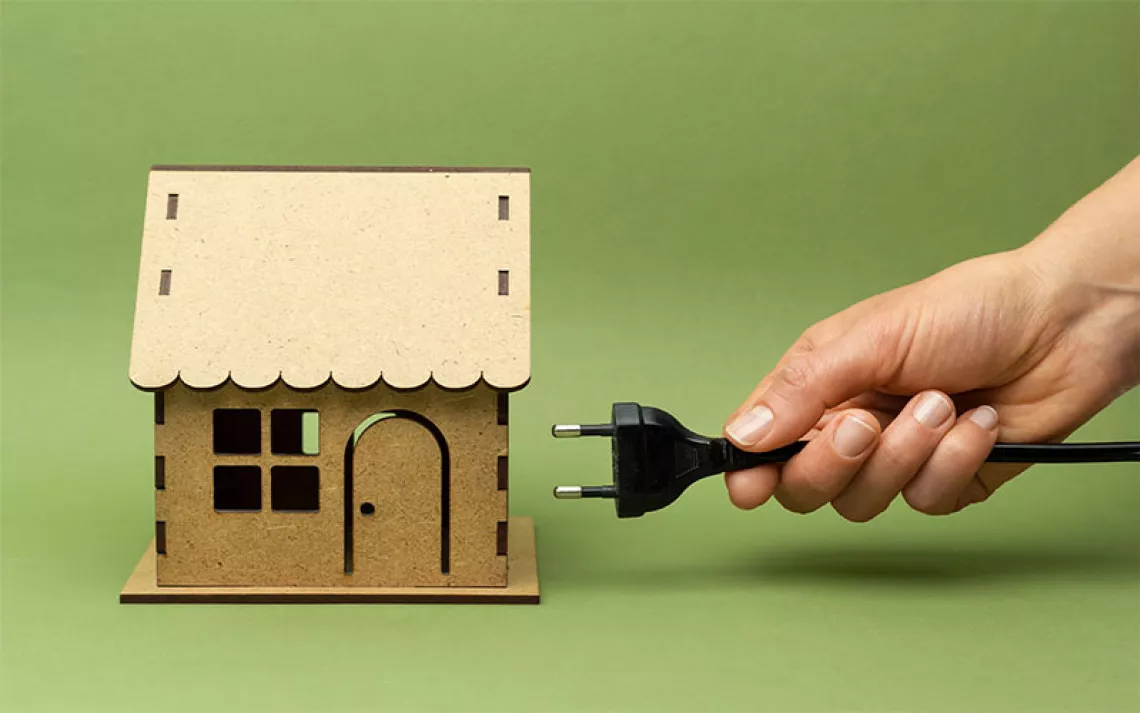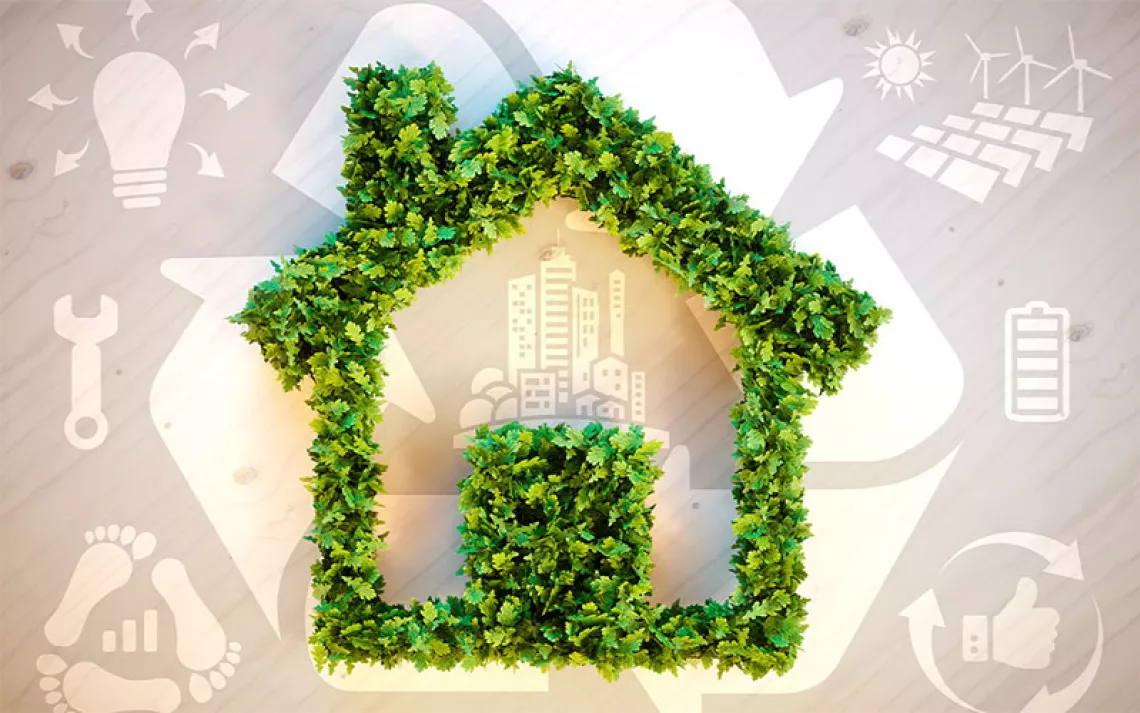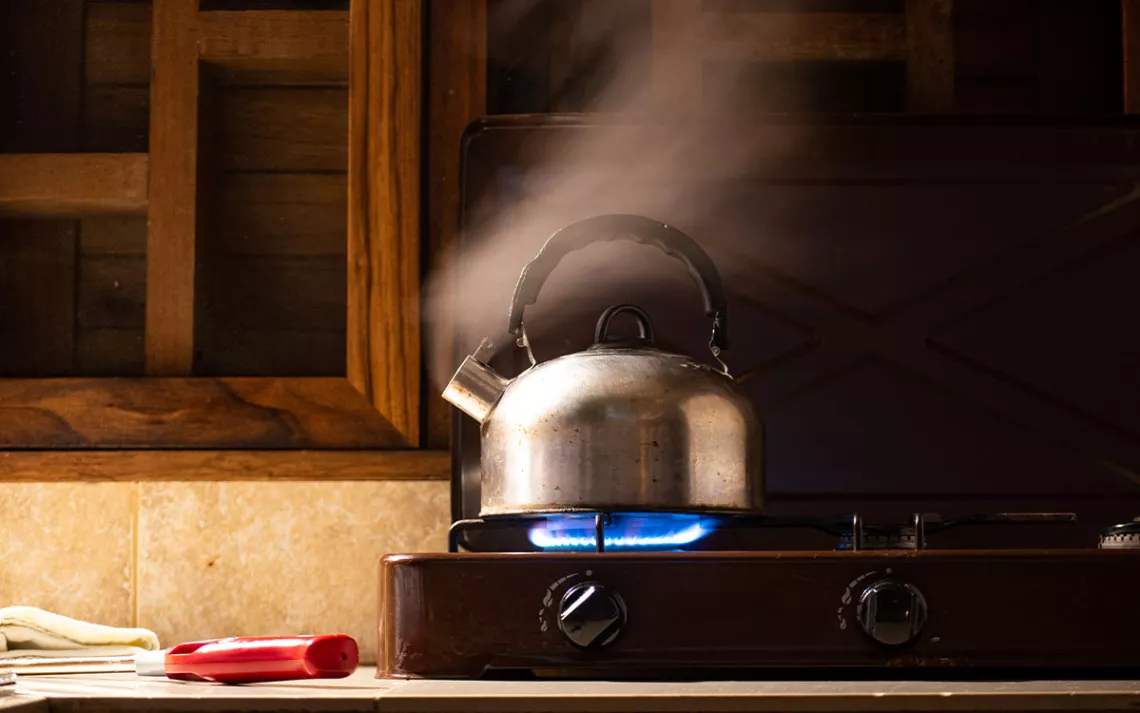A Holiday Shopping Guide for Healthy and Affordable Home Upgrades
How to take advantage of energy efficient home-improvement tax credits

Photo by Charles Rex Arbogast/AP
As we head into the holiday shopping season, you may be looking to find the best deals on big-ticket appliances or expensive home-improvement items like a heat pump or exterior doors. As you hunt for the best bargains, you should also check to see if what you’re shopping for qualifies for the new residential energy efficiency tax credit created by the landmark climate and clean energy law President Biden signed last year—the Inflation Reduction Act.
This new credit won’t save you money at the register, but it will mean extra money back in your pocket come tax-filing time. In fact, you could save 30 percent on the cost of qualifying purchases—up to $3,200 each year from now until 2032.
These improvements will also save you money in the long run on your electricity bills. Energy efficiency saves consumers money and decreases demand on the grid because the appliances use less energy. Estimates from Rewiring America show electrification of buildings and homes will reduce electricity consumption and save households $1,050 to $2,600 per year on utility bills. To find out if a product you are shopping for qualifies, visit the IRS and Energy Star websites.
This handy reference guide will help you find the most energy efficient and clean options. Be sure to keep reading to find out how to claim your tax credit.
Before you go shopping, first consider getting a home-energy audit
There may be a certain appliance or home upgrade that you need or want, but if you’re interested in finding out other ways to make your home more energy efficient, a home-energy audit will help. The US Department of Energy estimates that a home-energy audit can help you save up to 30 percent on your energy bill.
On top of those savings, the audit itself qualifies for a tax credit!
A qualified home-energy auditor will help you identify the first steps for getting the most bang for your buck. For example, you may need to upgrade your breaker box (another eligible tax credit) before adding more efficient electric appliances. Or, you may be able to skip buying a new appliance by simply upgrading your insulation or air sealing windows and doors to improve the functionality of what you already have. This audit will not only help you save money; it can also identify ways to reduce pollution in your home that harms your health as well as pollution that gets released outside and contributes to climate change.
To find an auditor, you can reach out to your utility company or state energy office, or visit the Residential Energy Services Network website to search for one in your area.
Eligible Product Guide
Here are some of the home appliances that qualify for federal tax rebates and credits.
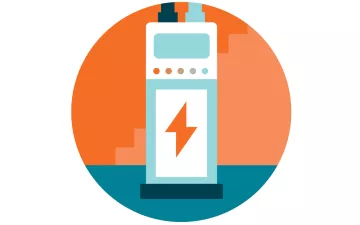
1. Heat pumps
Air-source heat pumps for heating and cooling
This super-efficient appliance does both heating and cooling and is eligible for a credit of up to $2,000 per year, including labor for installation.
The ability of heat pumps to both heat and cool with one appliance is not only convenient but also in some cases can be life-saving. Heat pumps allow residents in regions of the country that have previously not needed air conditioning or space heating to have access to it now as climate-change-driven heat waves and winter storms turn dangerous and sometimes deadly.
Heat pumps run on electricity, which means they do not directly combust fossil fuels. Burning fuels like gas, oil, or propane releases air pollutants that are harmful to human health and the climate, like nitrogen oxides, carbon monoxide, particulate matter, and climate-disrupting carbon dioxide. These pollutants directly and seriously impact human health, from increasing the rates of asthma to causing thousands of premature deaths each year.
Your new heat pump can be ducted or non-ducted (known as mini-splits). Whether a particular product qualifies will depend on whether you live in the northern or southern part of the country. Check the box of the product or share this table with your local retailer to ensure your heat pump qualifies for this new tax credit!
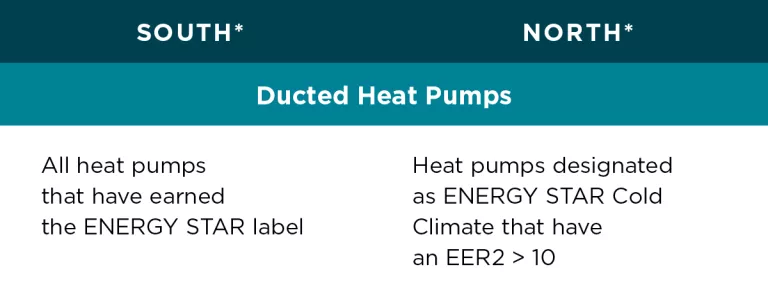
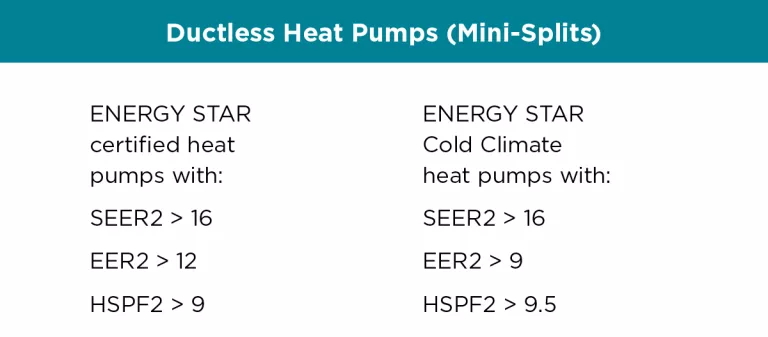
2. Heat pump water heaters
A new way to heat your water
Using similar technology of removing heat from the air, heat pump water heaters are an incredibly efficient way to take steamy showers or wash dishes with nice hot water.
You can claim 30 percent of project costs (that means for the product and the labor for installing) not to exceed $600.
3. Exterior doors, windows, and insulation
Not sexy, but hugely important
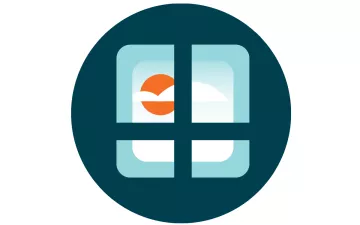
Also known as “building envelope components,” products in this category will help keep warm or cool air in your house, so you are not spending money to heat or air condition the outside. They may not always be viewed as exciting purchases, but energy efficient exterior doors, windows, insulation, and air sealing will save you money on your utility bills and ensure that your home is comfortable and safe when the weather outside turns extreme or dangerous.
To qualify, building envelope components must have an expected lifespan of at least five years. Qualified new components include the following:
- Exterior doors that meet applicable Energy Star requirements. Credit is limited to $250 per door and $500 total.
- Exterior windows and skylights that meet Energy Star Most Efficient certification requirements. Credit is limited to $600 total.
- Insulation and air sealing materials or systems that meet International Energy Conservation Code (IECC) standards in effect at the start of the year two years before installation. For example, materials or systems installed in 2025 must meet the IECC standard in effect on January 1, 2023. These items don't have a specific credit limit, other than the maximum credit limit of $1,200.
4. Electrical components
Modernize your home’s wiring
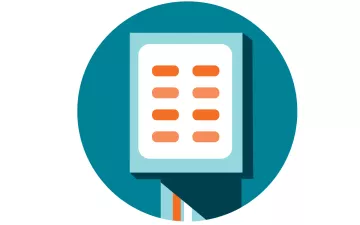
Older homes may not have the electrical capacity and might not be able to support the addition of a large electrical appliance. Maybe you aren’t adding a large appliance but you often trip a circuit when using multiple small appliances. You can add amperage to your system and ensure you’re able to meet your electricity needs while also improving safety.
Any improvement to or replacement of a panelboard, sub-panelboard, branch circuits, or feeders is eligible for the tax credit if it
- is installed in a manner consistent with the National Electric Code,
- has a load capacity of not less than 200 amps,
- is installed in conjunction with, and enables the installation and use of,
- any qualified energy efficiency improvements or
- any qualified energy property (heat pump water heater, heat pump, central air conditioner, water heater, furnace or hot water boiler, biomass stove or boiler).
You can claim 30 percent of the project total, and there is a limit of $600 per item.
5. Electric vehicle charging
Get plugged in
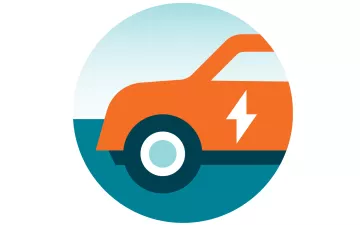
If you have or are thinking of purchasing an electric vehicle, adding an EV charger at home can qualify for a $1,000 tax credit for people in rural and low-income communities, depending on the location.
6. Go solar to reduce your energy bills even further
Make your roof a generator
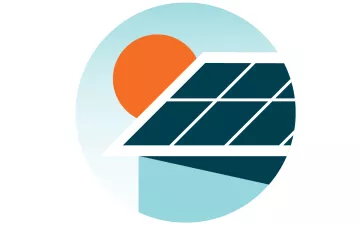
Homeowners can save even more money on utility bills by adding rooftop solar, and there are tax credits available that will cover up to 30 percent of rooftop solar installation costs—and that can be paired with state incentives too.
The credit will be available until at least 2035. All told, the Inflation Reduction Act can help you save about $300 per year, or $9,000 over the life of your new rooftop solar system. Learn more about how to save money on solar panels for your home.
Verify tax credit eligibility ahead of your purchase

After using this guide or consulting with the experts at your local store, you can double-check that the product you chose qualifies for the Energy Efficient Home Improvement Tax Credit by following these steps:
- Scan this QR code using your phone's camera or a QR code reader app. This code will direct you to the Energy Star product finder landing page. Here you'll find a list of clickable categories such as appliances, building products, and commercial appliances.

- Identify the item type you need to verify by clicking on the appropriate category. The local appliance store clerk can assist you in selecting the correct category if you need help. Upon selection, you'll be taken to a more specific search page tailored for that category.
- On this search page, locate the "filter your results" and "sort by" features. These are usually situated toward the top or middle of the page. "Sort by" could be useful if you're looking for specific brands.
- To find tax credit eligible items, filter your results to display only these products. You will see a “Tax Credit Eligible” link near the bottom of the description for eligible products. If you do not see the link in the product description, then that product is not eligible for a tax credit.
- Once you find a qualifying product, verify its brand name, model number, and any other details provided by the Energy Star product finder. Make sure these perfectly match with your choice before making a purchase.
With these steps, you can be confident about the tax credit eligibility of your selected items. Confirm the information before purchasing to ensure you can claim your tax credit in the upcoming tax filing season.
If you have any questions that are not addressed by this guide, contact Energy Star customer support.
How to claim your tax credit
- Save your receipt!
- Ensure that you are filing for the credit for the tax year when the equipment was installed, not just when it was purchased. If it’s still sitting in a box in your garage, you can’t claim the tax credit yet. (Also, note that this tax credit only qualifies if the property is considered your primary residence.)
- With a certified tax professional or online tax service like Turbo Tax, fill out and file Form 5695, Residential Energy Credits Part II when you submit your tax return to claim the credit.
- Celebrate as the amount you owe in taxes goes down!
What if a tax credit doesn’t work for me?
It’s important to acknowledge that there can be barriers to accessing tax credits. The system requires customers to pay up front and have tax literacy. And, in some cases, other upgrades are needed as well (like roof repair or mold remediation) that are not covered in these tax credits.
There are some programs available that remove or lower those barriers for low- and moderate-income households:
- Every state runs a weatherization program for low-income households. Once selected for the program, you receive an energy audit to determine the scope of energy efficiency measures available to your home.
- States will begin to roll out home-energy rebates next year, which will include rebates for heat pumps and energy efficiency measures.
- Many states and utilities also have rebate programs for these measures. Be sure to check with your electric utility to see what resources it may provide.
- For households that have trouble affording their energy bills, there are programs available to help, like the Low Income Home Energy Assistance Program, also administered by state governments.
These programs are essential for accelerating the clean energy revolution—but they are not enough. The Sierra Club and our partners are continuing to work to ensure federal, state, and local governments and utilities prioritize support and accessibility for low-income households and renters to make energy efficient home improvements. Learn more at sierraclub.org/building-electrification.
 The Magazine of The Sierra Club
The Magazine of The Sierra Club
